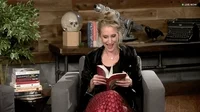www.generationgenius.com
I found this cool website for science content. It puts me in a mindset of Bill Nye with the fun entertaining videos, but it’s more current. Bill Nye started back about 25 years ago so a lot of the videos are old. A major difference I see between Generation Genius and Bill Nye is that these videos have 2 students about high school age who look more relatable with a younger scientist who loves to dance. It also aligns with the Next Generation Science Standards which is also a plus. I was able to watch a sample video towards the bottom on physical and chemical change. Within the video, they did cool experiments that corresponded with the lesson. They also provide discussion questions, interactive activities, a lesson plan, a teacher guide, and even a quiz for the various lessons. It’s a website that, like BrainPop there is a paid subscription, but I think this would be worth subscribing to for science.
162
Autumn







